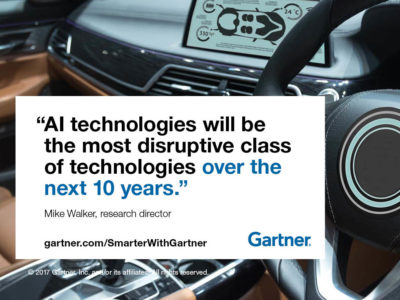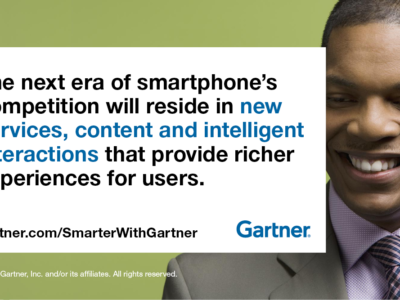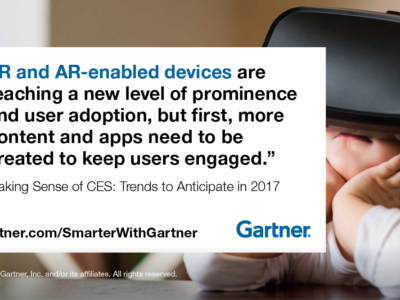Gartner analyst Brian Blau testifies about augmented reality to the Senate and highlights the potential for AR technology.
Imagine a world in which field service workers who maintain utilities will be able to use an augmented reality (AR) headset to provide visual overlays of complex instructions over their work on physical structures. During a “hands busy” task, AR would allow for greater efficiency and improved productivity.
This was the potential use case Brian Blau, research vice president, proposed to the U.S. Senate Committee on Commerce, Science and Transportation during the “Exploring Augmented Reality” hearing. The Senate, like much of the world, was inspired to look toward the future of AR by the recent success of Pokemon Go. While the AR feature in Pokemon Go isn’t particularly sophisticated — or truly AR — the game continues to be a catalyst, inspiring companies and governments to take a closer look at how immersive AR solutions can benefit their business processes.
Read More: Why IT Leaders Should Pay Attention to Augmented Reality
The landscape for HMDs
Although Pokemon Go received most of the attention, 2016 was a big year for AR and virtual reality (VR) with an increase in the availability of head-worn devices (HMD) devices. Companies created ecosystems of devices, platforms and contents vying to be the first to deploy devices. HMDs employ small displays or projection devices that project contextual information for the user. However, creating a technology that is capable of integrating with the human perception of capabilities means highly effective AR and VR won’t emerge for years. The current technology lacks maturity, but as its sophistication deepens, its adoption rate will accelerate at a modest pace through 2020.
Read More: Gartner’s Top 10 Strategic Technology Trends for 2017
“The market for AR is mainly business today. We estimate the number of AR HMDs sold in 2016 to be around several hundred thousand,” Mr. Blau testified. “We forecast that in 5 to 10 years hundreds of millions of HMD devices will be in the hands of users, split between see-through transparent display devices and those that provide full immersion, such as VR.”
What businesses should focus on
Gartner estimates by mid-2016, more than 7 million HMD devices were in the hands of consumers. However, they will mostly be used for traditional flat-screen video, video games and pilot projects by businesses that want to investigate its use. However, over the next three years, both markets will become well-established and business adoption could exceed consumer adoption.
“Business use cases are broad. In coming years, field service workers, those who maintain utilities, infrastructure, machines and equipment, will benefit because their work is often ‘hands-busy’ tasks,” said Mr. Blau. “An AR headset can provide visual overlays of diagrams, complex instructions, event recording or enable “see-what-I-see” remote collaboration. Using AR can improve workforce productivity by removing time-wasting behaviors or improving the efficiency of tasks.”
Competition will be fierce in the hardware industry, but there are also opportunities in core technologies, apps, services infrastructure and components, Mr. Blau said.
Read More: 3 Trends Appear in the Gartner Hype Cycle for Emerging Technologies, 2016
The future
The future is bright for AR and VR and the technology that supports them. Gartner estimates in the next 10 years HMDs — across all form factors — will generate $72 billion in device revenue alone. The technology will evolve from pilot projects with modest growth to sustainable business models, market maturity and global availability. The technology shipping in 2020 will be markedly different than anything available today. The technical aspects of AR and VR will merge into a mixed reality feature set, with AR maintaining a larger market share due to its business applications. This new technology, called mixed reality, will merge the real and the virtual worlds to create hyperpersonal experiences.
“The result will be a plethora of new computing experiences that drive increased productivity across many industries, improved effectiveness of individuals in their work, and exciting new developments in the leisure, entertainment and retail sectors,” Mr. Blau said.
Get Smarter
Client Research
Gartner clients can learn more about the augmented reality landscape and the biggest competitors in the full research report Competitive Landscape: HMDs for Augmented Reality and Virtual Reality.
Webinar
Brian Blau and Tuong Nguyen deliver advice about which devices, apps and services will have the best opportunity to win the biggest portion of the consumer wallet in the CES 2017 webinar.
Senate Testimony
For more information, view the Senate hearing and Mr. Blau’s testimony.










